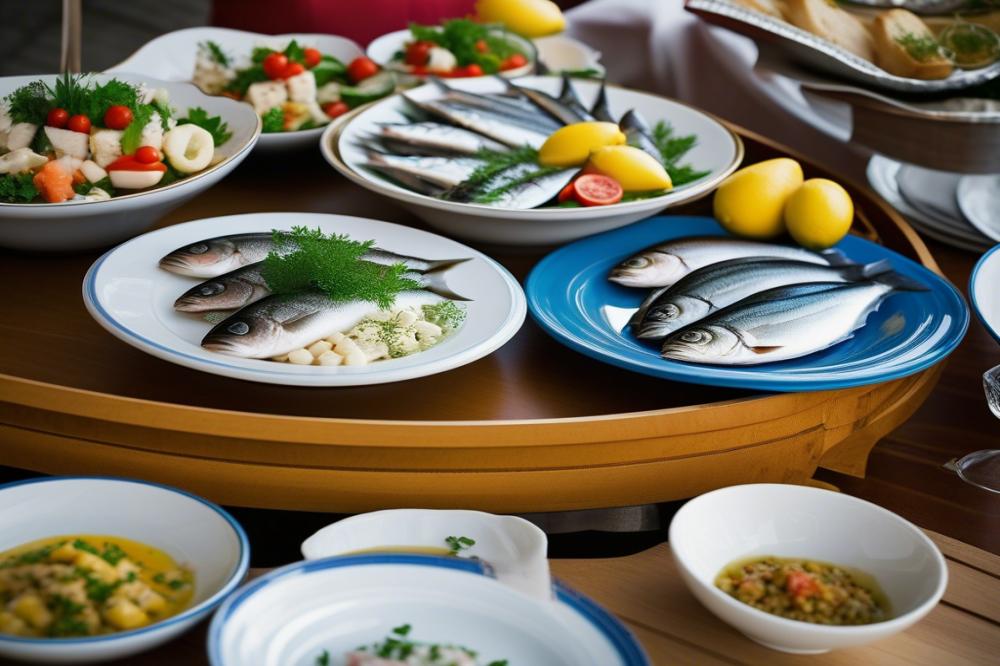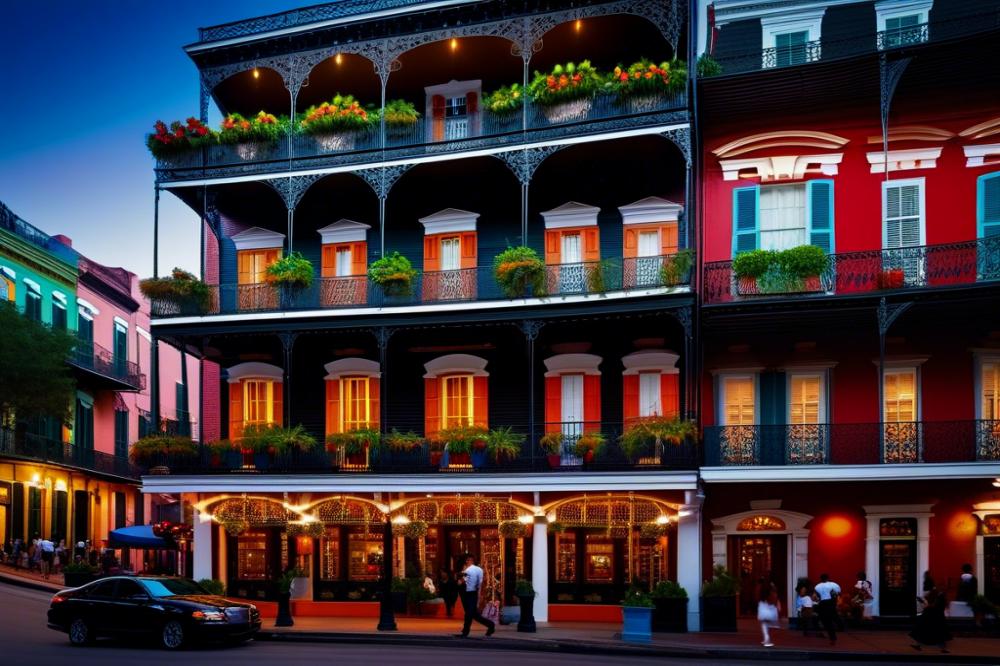Introduction
Culinary adventure holidays in Poland offer a unique experience for travelers seeking to explore the rich food culture of this vibrant country. With its diverse landscape and history, Poland has much to enjoy for food enthusiasts. The charm of exploring local flavors is particularly captured along the Baltic Coast, where seafood reigns supreme.
Local restaurants and fishing villages showcase traditional recipes that have been passed down through generations. These dishes not only reflect the region’s history but also the daily life of its people. For many, sampling Polish fish dishes is not just a meal; it’s a journey through time and tradition.
The Baltic Coast stands out as a premier seafood destination. Coastal cuisine here is influenced by fresh catches from the sea. Visitors can wander through bustling fish markets, filled with the aromas of the day’s catch. In these markets, you can find everything from herring to cod, all ready to be cooked using regional specialties.
Culinary tourism thrives in this area, as local chefs embrace both classic and modern techniques. Gourmet tasting events allow travelers to savor the best of what the sea has to offer. Alongside these experiences, the beautiful scenery provides a perfect backdrop for discovering the flavors of the region.
Embarking on a culinary journey along the Baltic Coast offers a chance to immerse oneself in the local culture. Enjoying seafood in this setting is more than just tasting; it is about connecting with the rich heritage of Poland. In every bite, there is a story waiting to be told.
Polish fish dishes: A Coastal Culinary Delight
The Baltic Coast of Poland offers an exciting array of seafood dishes. Many traditional recipes have been passed down through generations. Each dish tells a story of the region’s rich fishing heritage. Local restaurants thrive on these recipes, creating a culinary experience worth exploring.
Exploration of Traditional Recipes Unique to the Baltic Region
Seafood is a staple in this coastal cuisine. Classic recipes often feature herring, carp, and cod prepared in various styles. One dish that stands out is “śledź w oleju,” or herring in oil, often flavored with onions and spices. Another favorite is “karp,” typically served during holiday meals, showcasing its historical importance in Polish culture. Exploring these dishes at fishing villages reveals the heart of Poland’s food culture.
Highlighting Regional Specialties and Their Historical Significance
Regional specialties reveal much about the local landscape and people. Fishermen have relied on the abundant waters of the Baltic Sea for centuries. These dishes reflect a deep connection to the land and sea. The vibrant fish markets offer fresh catches, often turning into gourmet tasting experiences. Tourists frequently seek out these unique flavors, making culinary tourism a booming sector.
The Role of Fish in Polish Food Culture
Fish holds a special place in Polish food culture. It symbolizes both sustenance and celebration. Many families serve fish during significant events, marking the dish as a centerpiece. The preparation varies, showcasing local herbs and techniques. This deep-rooted connection to fish emphasizes its importance in culinary traditions. Exploring the wealth of flavors found along the Baltic Coast is a delicious journey worth taking.
Local Restaurants and Fishing Villages
Imagine strolling through charming fishing villages along the Baltic Coast. The quaintness of these towns draws visitors in. Traditional wooden houses relax by the water’s edge. Fishermen often dock their boats nearby, ready with the freshest catches. The smell of saltwater mixes with the aroma of freshly cooked seafood.
Restaurants in these areas offer a true taste of coastal cuisine. Many local restaurants pride themselves on serving authentic seafood dishes. Seek out places like Restauracja Amber, famous for its salmon tartare. Foodies flock to these establishments for gourmet tasting experiences that highlight regional specialties. The menus showcase traditional recipes passed down through generations.
Recommendations for Local Restaurants
Exploring local fish markets is also a must. Vendors sell a variety of freshly caught fish, setting the stage for culinary tourism. Delicacies such as herring and smoked mackerel tempt passersby. In the heart of Sopot, a bustling seaside town, you can find two or three delightful spots worth visiting. Each restaurant offers something slightly different but equally delicious.
For those looking to explore more casual dining, U Hynka is a fantastic option. Diners can enjoy classic dishes with a modern twist. A simple plate of fried cod may become your new favorite. Don’t forget to pair your meal with local beer or refreshing kompot.
Interviews with Local Chefs
Chefs in these fishing villages share a deep passion for their craft. Bartosz, head chef at a popular eatery, talks about his love for traditional cooking. “Every time I cook, I think of my grandmother,” he says. His dishes reflect a commitment to quality and authenticity. This dedication to using fresh ingredients shines in every bite.
Another chef, Kasia, also emphasizes the importance of local fish. “It’s about respecting our heritage,” she explains. The preparation methods often date back centuries. This respect for food culture resonates throughout the entire region. Conversations with these chefs reveal a common theme: pride in their culinary roots.
The Vibrant Fish Markets of the Baltic
The Baltic Sea is home to some of the most bustling fish markets in Poland. Cities like Gdańsk and Szczecin serve as the centerpiece for seafood lovers. Here, fresh catches are brought in daily, filling the air with robust scents and lively chatter. Stalls overflow with glistening fish and shellfish, each one a testament to the region’s bountiful waters.
Overview of Main Fish Markets
In Gdańsk, the historic fish market is a must-visit. It sits near the waterfront, surrounded by charm and history. Local fishermen sell their catches right off their boats, offering the freshest selections. Szczecin also boasts a vibrant market scene. Visitors can find everything from cod to mackerel, and even unique regional specialties like sprats. Both cities reflect the rich maritime heritage of coastal cuisine.
What to Expect at a Polish Fish Market
At these fish markets, your senses will come alive. The sounds of vendors calling out can be delightful and chaotic at the same time. Brightly colored seafood catches the eye, while the aroma of saltwater and fresh fish fills the air. Sampling bites of smoked fish or local preserves adds to the experience. Seeking out traditional recipes could inspire home cooking. Street food vendors might tempt you with dishes featuring today’s catch, making every visit an unforgettable culinary journey.
Tips for Sourcing the Freshest Seafood
When shopping at a Polish fish market, look for clear eyes and shiny scales on whole fish. Fresh seafood often feels firm to the touch. Engage with vendors for advice on what’s in season or best for your needs. Don’t hesitate to ask them for cooking tips or recipe suggestions. Many local restaurants might provide ideas on using specific seafood, blending culture with flavor. For a gourmet tasting experience, consider visiting fishing villages nearby, where you can experience food culture in its most authentic form.
Culinary Tourism: A Passport to Polish Sea Flavors
Culinary tourism in Poland is a fantastic way to explore the rich flavors of the Baltic coast. Guided tours and culinary adventure packages offer exciting opportunities to delve into the region’s food culture. Travelers can visit charming fishing villages and observe traditional recipes in action, making for an unforgettable experience. These tours often include stops at local restaurants and lively fish markets where the freshest seafood is available.
The gourmet tasting experiences available along the coast highlight regional specialties that define Polish cuisine. Participants can savor dishes not found anywhere else, crafted with care from local ingredients. By tasting foods prepared using time-honored techniques, one can truly appreciate the depth of flavors that characterizes coastal cuisine. The knowledge shared by local chefs enriches the experience, allowing visitors to understand the importance of each ingredient.
Culinary tourism also fosters a connection between tourists and the local community. Engaging in these food adventures opens up conversations with fishermen and chefs, offering insights into their traditions. This interaction deepens the appreciation for the hard work behind each dish. Exploring the distinct tastes of the region transforms typical sightseeing into a flavorful journey through the heart of Polish culinary arts.
Sampling Seafood: Must-Try Dishes
When traveling along the Baltic coast, indulging in seafood is a must. Polish fish dishes offer a delightful taste of coastal cuisine that visitors cannot overlook. Start your culinary journey with herring, a staple in many traditional recipes. This fish can be prepared in various ways, from marinated to smoked. Each method brings out different flavors, making it a versatile option.
Cod is another favorite among locals. Often breaded and fried, this fish has a mild taste that pairs well with many sides. Many people also enjoy it baked, which allows the delicate flavors to shine through. Flounder, with its subtle sweetness, often appears in Mediterranean-inspired dishes around coastal restaurants.
Unique preparation methods elevate these seafood options. Many fishermen use traditional practices, which enhances the freshness of the catch. For instance, you might find herring served with beets and potatoes, a classic combination that showcases Polish food culture. Cod can also be enjoyed in a creamy sauce or as part of a hearty stew, perfect for chilly evenings by the sea.
Visiting local fish markets can be an exciting experience. Freshly caught seafood lays on display, inviting you to taste authentic flavors. Don’t hesitate to ask vendors for their recommendations. Sampling gourmet tasting menus at beachfront eateries also provides access to regional specialties. It’s the perfect way to indulge while gazing at the stunning views.
Pairing dishes with local beverages enhances the entire experience. Try a glass of Żubrówka, a bison grass vodka, which complements fish beautifully. Regional beers are another excellent choice, especially those brewed in nearby towns. Such pairings create a delightful harmony of flavors, making your meal unforgettable.
Traveling through fishing villages along the coast offers a glimpse into the rich food culture of Poland. Each bite of fish tells a story of tradition and community. Adventure awaits as you explore the unique dishes crafted by skilled chefs who respect old cooking methods. Immerse yourself in this culinary tourism experience, and you will cherish the flavors of Poland long after you leave.
Final Thoughts on Culinary Adventures
Poland’s Baltic Coast offers a treasure trove of culinary delights. Fishermen bring in fresh catches daily, adding to the vibrant food culture of the region. Each fish dish carries its own story and tradition. Visitors can savor mouthwatering flavors and diverse preparations that showcase the best of seaside dining. Traditional recipes, often passed down through generations, highlight the connection between the land and the sea.
Experiencing this unique culinary scene firsthand is essential. Local restaurants, seaside shacks, and bustling fish markets provide opportunities to taste the freshest seafood. Think about taking the plunge and diving into a plate of herring or indulging in a comforting bowl of fish soup. Fresh ingredients and preparation styles vary across the coast, ensuring something for everyone who loves to eat.
Seafood plays a crucial role in enhancing Poland’s gastronomic landscape. It brings people together, creating shared memories over delicious meals. The flavors encountered along the Baltic Coast reflect the rich history and natural resources of the area. Don’t miss your chance to explore this enchanting food journey, where every dish tells a tale of the sea. Make your way to Poland’s shores, and let the culinary adventure unfold before you.



